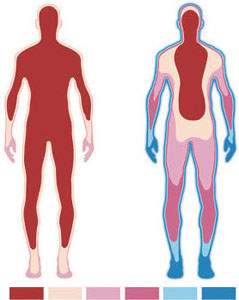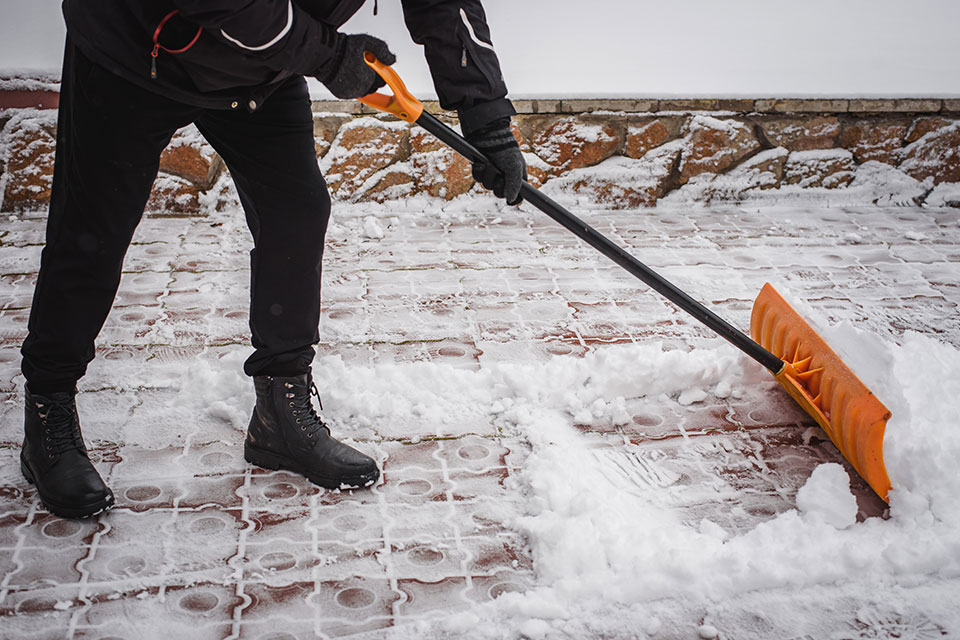It goes without saying that the daily grind can be stressful. Add in the unpredictability of working outdoors and you're up against one inconsiderate, no holds-barred frenemy who goes by the name of Mother Nature.
Cold Stress: A Real Danger
Hundreds of people die in the US each year from exposure to extreme cold. In 2010, approximately 45 of the cold stress victims were workers. Don't let yourself or your crew fall victim to the potentially fatal risks of working in the cold. Cold stress hazards include:
- Discomfort: resulting in distraction, reduced efficiency and productivity
- Frostbite: the physical freezing of skin and body tissues
- Hypothermia: reduction in core body temperature
- Death
- Related hazards - slipping on ice, driving on icy roads, delayed reaction time, reduced dexterity, working with shorter hours of daylight, illness, etc.
As you can see, there is quite a range of severity—from the most benign (discomfort) to the most extreme (death). This is why it's of utmost importance to understand how the body reacts to cold and how to stop it from losing heat before it's too late. Watch for these common cold stress warning signs and address them immediately.
- Shivering, exhaustion, confusion, fumbling, memory loss, slurred speech and drowsiness are all possible symptoms of hypothermia.
- Numbness, a white or grayish-yellow skin area and skin that feels unusually firm or waxy are all possible symptoms of frostbite.
These signs may indicate that medical attention is needed quickly. Shivering might seem benign, but it should never be ignored.
Be Prepared: Make a Plan
Each work situation is different and weather conditions can change in a matter of moments. Periods of heavy work require less insulation and more ventilation than sedentary times and vice versa. The goal is to allow workers to perform their tasks comfortably and safely no matter how low the mercury drops. This is achievable with a proper cold stress plan.
Cold weather strategies include:
- Checking the forecast
- Layering up with proper PPE
- Working with a buddy who might notice changes in your behavior indicating cold stress
- Taking regular warm up breaks in heated shelters or vehicles
- Staying hydrated in the cool, dry air
- Keeping an extra set of dry clothing handy as well as high-energy snacks for more calories to burn.
Managing the Cold with PPE
 When in a cold environment, most of the body's energy is used to keep internal temperatures warm. Over time, the body begins to shift blood flow from the extremities (hands, feet, arms and legs) and outer skin to the core (chest and abdomen). (See the picture to the right.) This leaves the exposed skin and the extremities to cool more rapidly and increases the risk of frostbite and hypothermia.
When in a cold environment, most of the body's energy is used to keep internal temperatures warm. Over time, the body begins to shift blood flow from the extremities (hands, feet, arms and legs) and outer skin to the core (chest and abdomen). (See the picture to the right.) This leaves the exposed skin and the extremities to cool more rapidly and increases the risk of frostbite and hypothermia.
Outside of hibernating inside a climate-controlled building, most approaches for staying safe in cold weather focus on proper personal protective apparel (PPE), or clothing suited for the job. Nature seeks an equilibrium, spreading the amount of heat energy evenly across everything in the environment. As a single, warm body standing on a cold tundra, you don't stand a chance without the right gear. So where to start? Major occupational health organizations, including OSHA, recommend having a range of protective gear and clothing that can be adapted to the situation as well as dressing in layers, which can be added or removed as needed.
There are lots of options out there, but a windproof or wind-resistant shell is the first line of defense against convection. Since rapidly moving air cools people faster (known as the wind-chill effect), this is especially important for exposed work areas away from natural or constructed wind breaks, working at elevation, etc.
For your insulating layers, generally speaking, thicker is better for staying warm. But at some point, bulk can interfere with movement and the ability to work. Start with a base layer of long underwear using polypropylene or wool that wicks moisture away and does not absorb water. Layer up as needed per the forecast but stay away from cotton and even waffle-weave "thermal" fabrics. Cold weather work clothes must keep outside moisture out, allow inside moisture to escape (vent or wick), and dry quickly to avoid conductive heat loss to wet fibers. Some newer, high-tech fabrics reduce radiant heat loss by reflecting a portion of it back to wearers without making them feel like they are wearing a potato chip bag.
With all this talk about layering up, it's important not to forget about protecting key areas that are especially susceptible to cold including the head, specifically the ears and the nose, as well as hands, fingers and feet. Boots should be insulated on the soles, as well as around the foot, to minimize conduction of heat to cold concrete, stone, metal or ice. Gloves and tools with insulated handles are two ways to protect the hands. And as much as we might hate to admit it, our elders were right—wear a hat. Up to 40% of body heat can be lost when the head is left exposed. Face masks or goggles may even be required in some situations to protect exposed skin from cold temperatures and winds.
Finally, warm from the inside out. It is in fact possible and effective to trap some of the heat in the air that we exhale and to use that to pre-warm the cold air we breathe in to reduce respiratory heat loss using a balaclava heat exchange mask.
Beyond PPE
Beyond PPE, it is important to avoid direct contact with cold surfaces. Now is not the time to pull a triple dog dare from A Christmas Story. Metal poles, tools, railings, etc., rapidly conduct heat away from exposed fingers and hands. And if the task includes occasional sitting, kneeling or lying on hard, cold surfaces, a closed cell foam pad is recommended to protect those areas as well.
If the work environment does not provide adequate shelter, consider bringing one along. Portable tents and trailers are the norm for those hardy souls who actually seek out cold weather and spend extended periods fishing through holes in frozen lakes. Be sure that any portable heater is UL listed and properly vented to avoid fires or carbon monoxide poisoning.
Bottom Line
While school kids and skiers may look forward to the occasional "snow day," roads and runways still have to be cleared, utilities have to be restored and construction projects have to be kept on schedule. To keep workers safe and the wheels turning (literally), it's critical to know and address proper procedures and solutions for preventing and managing cold stress. So, when the temps start to drop and the job doesn't stop, you can safely and comfortably keep on crankin'.
Sponsored by Ergodyne®

